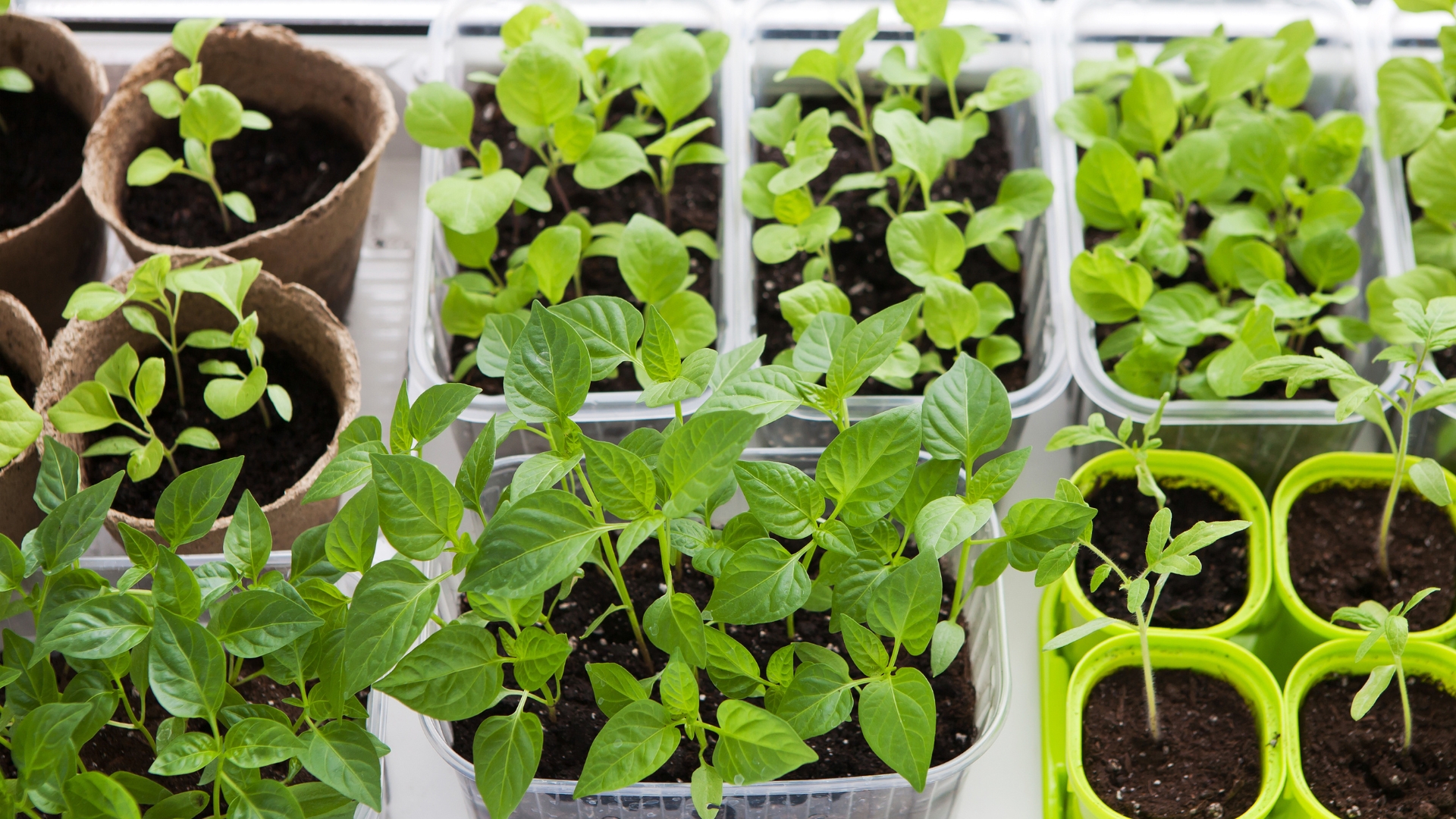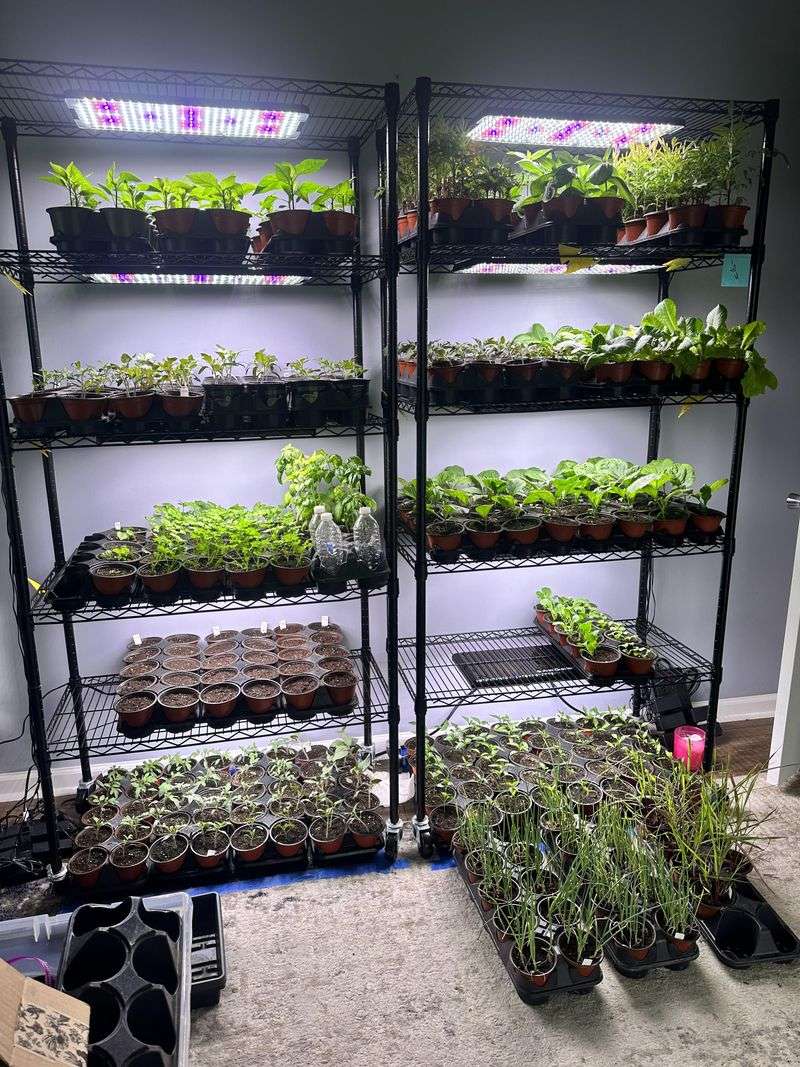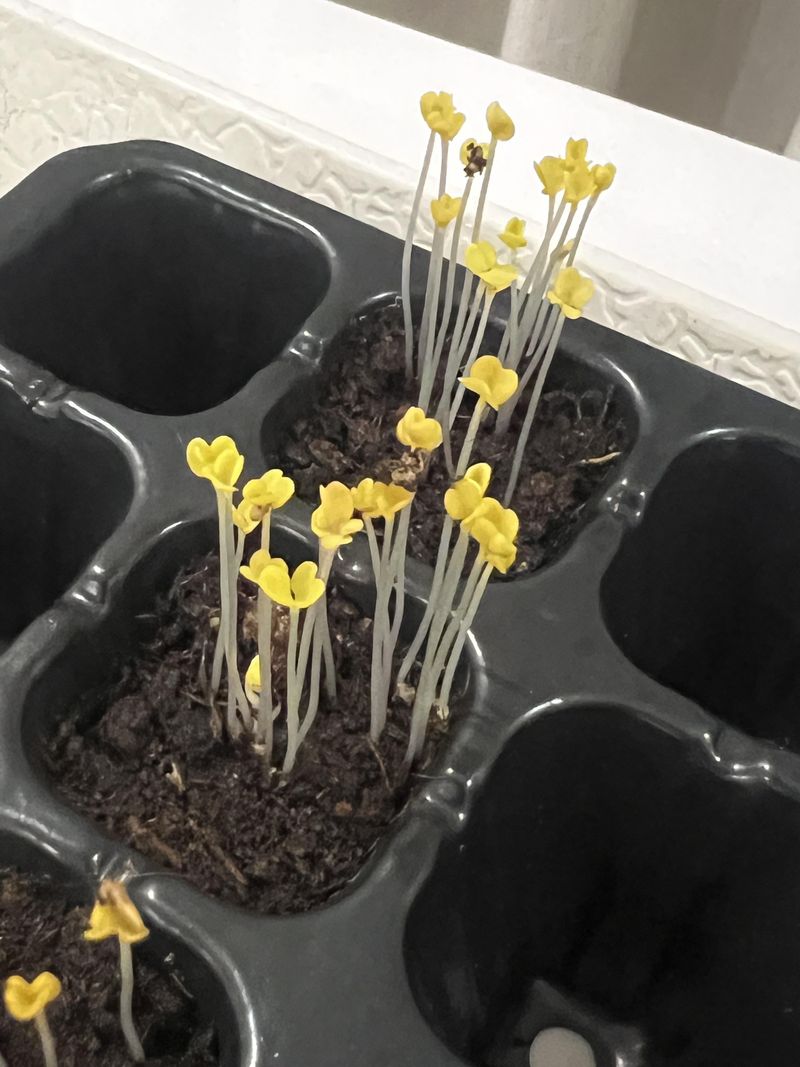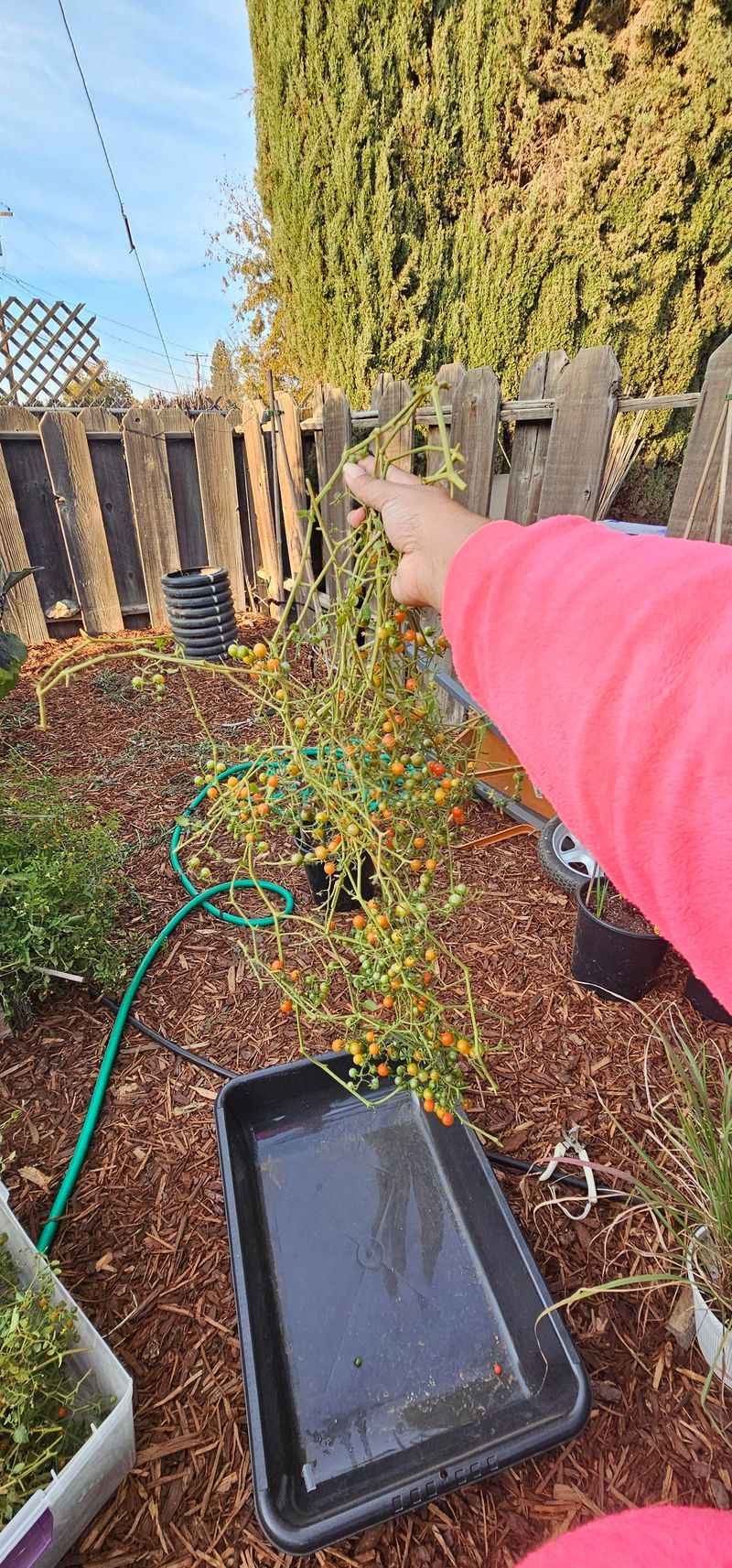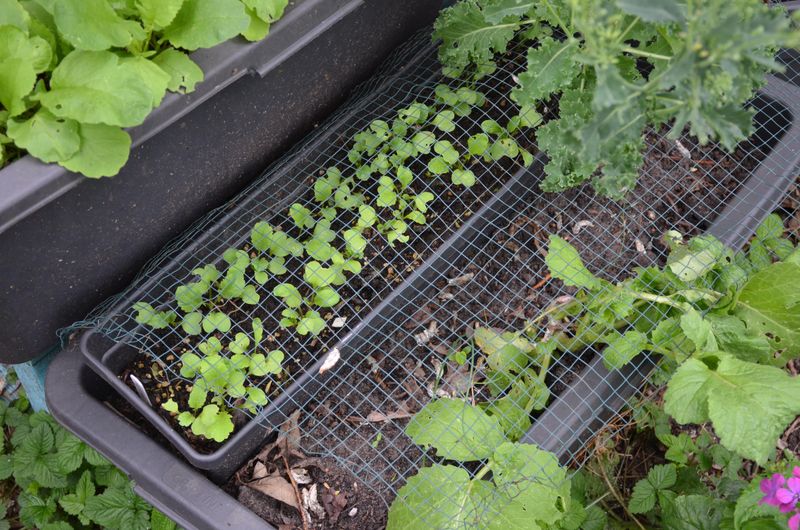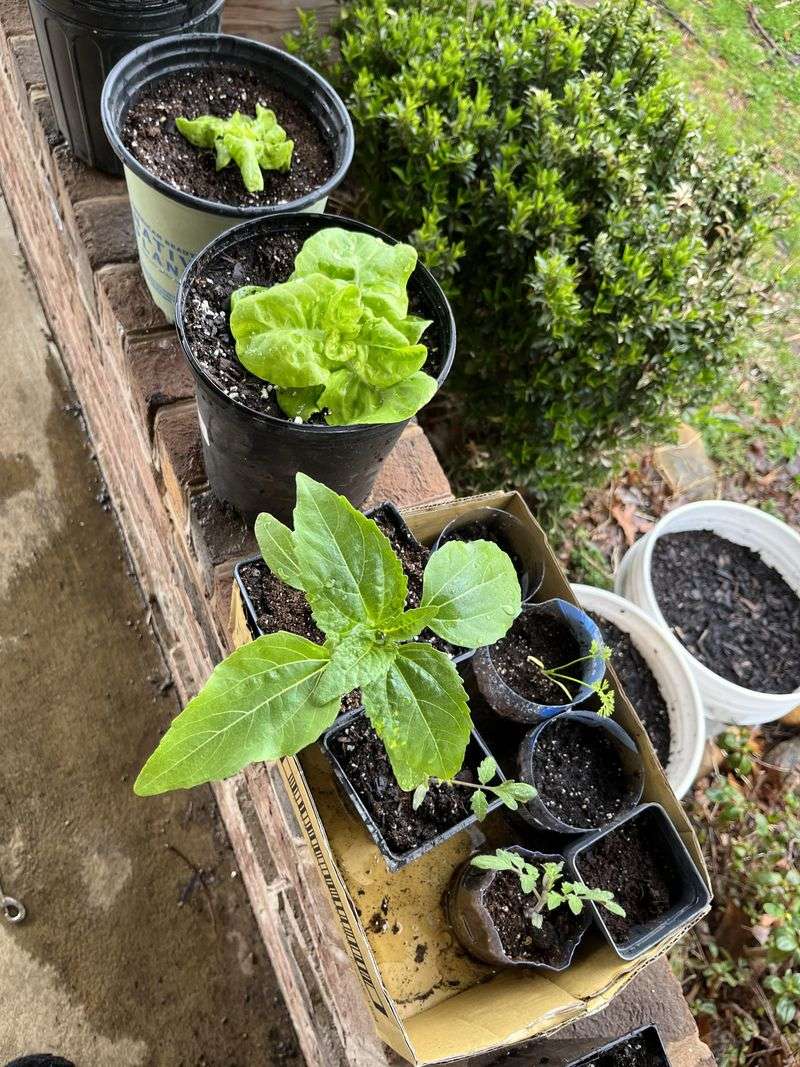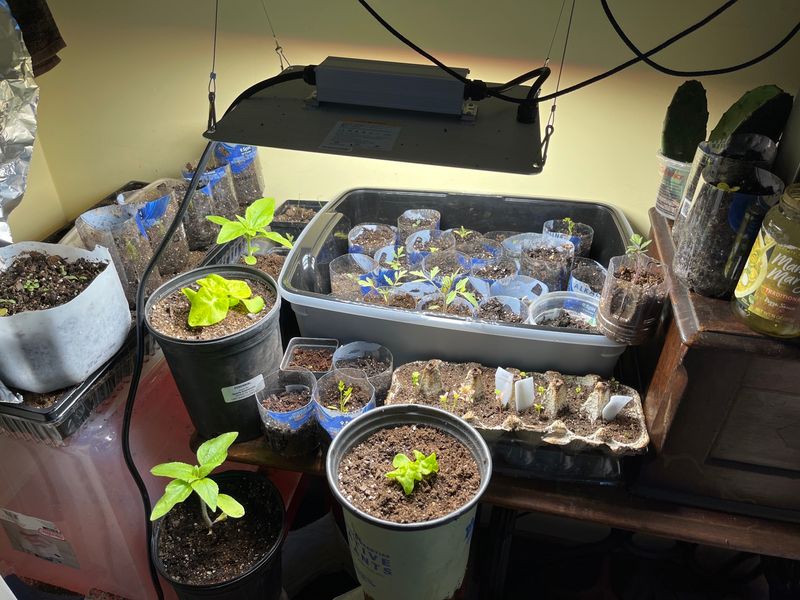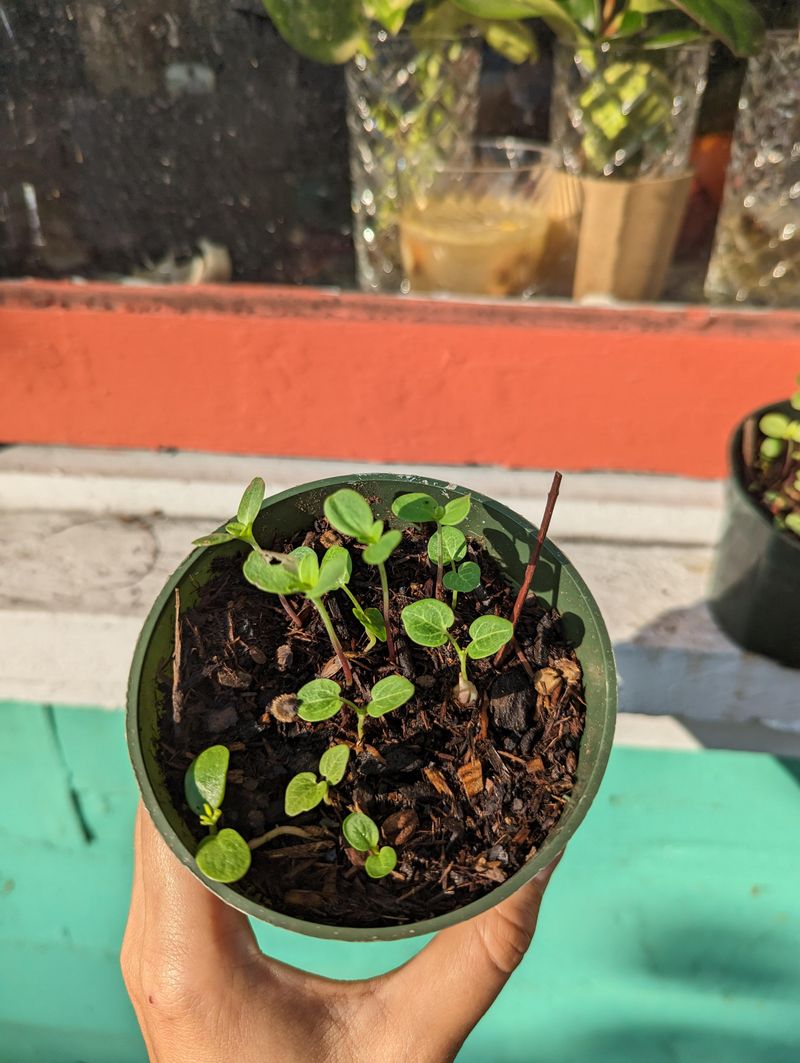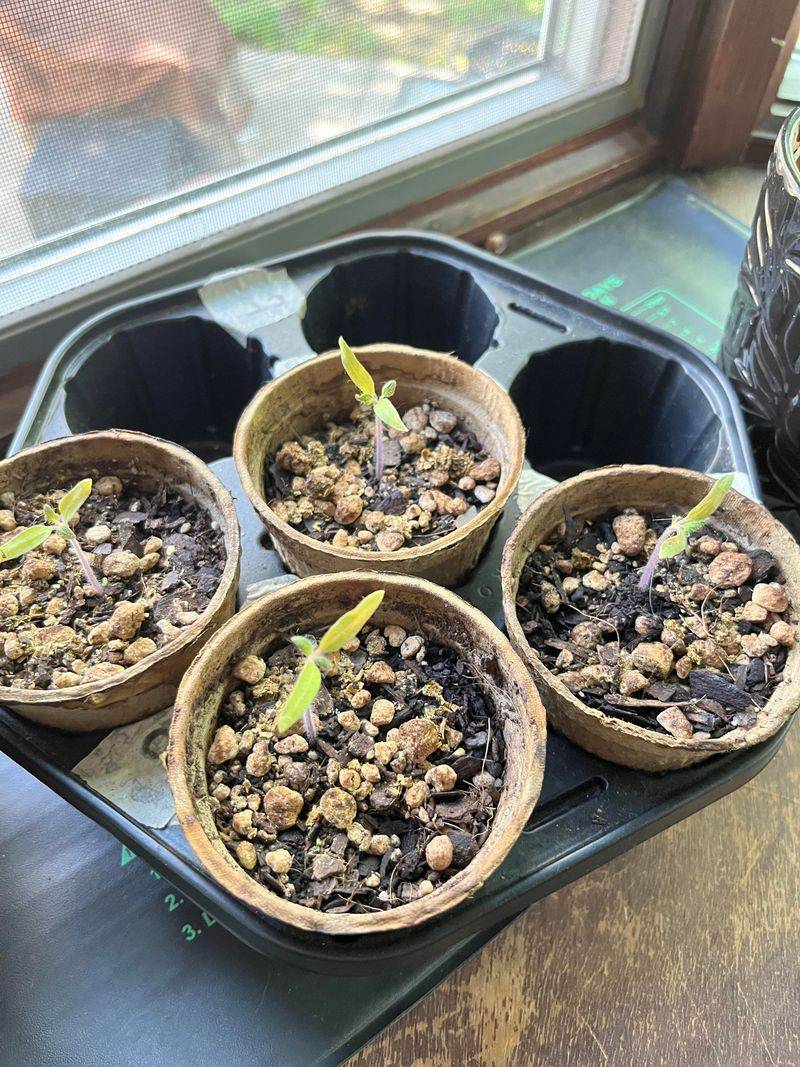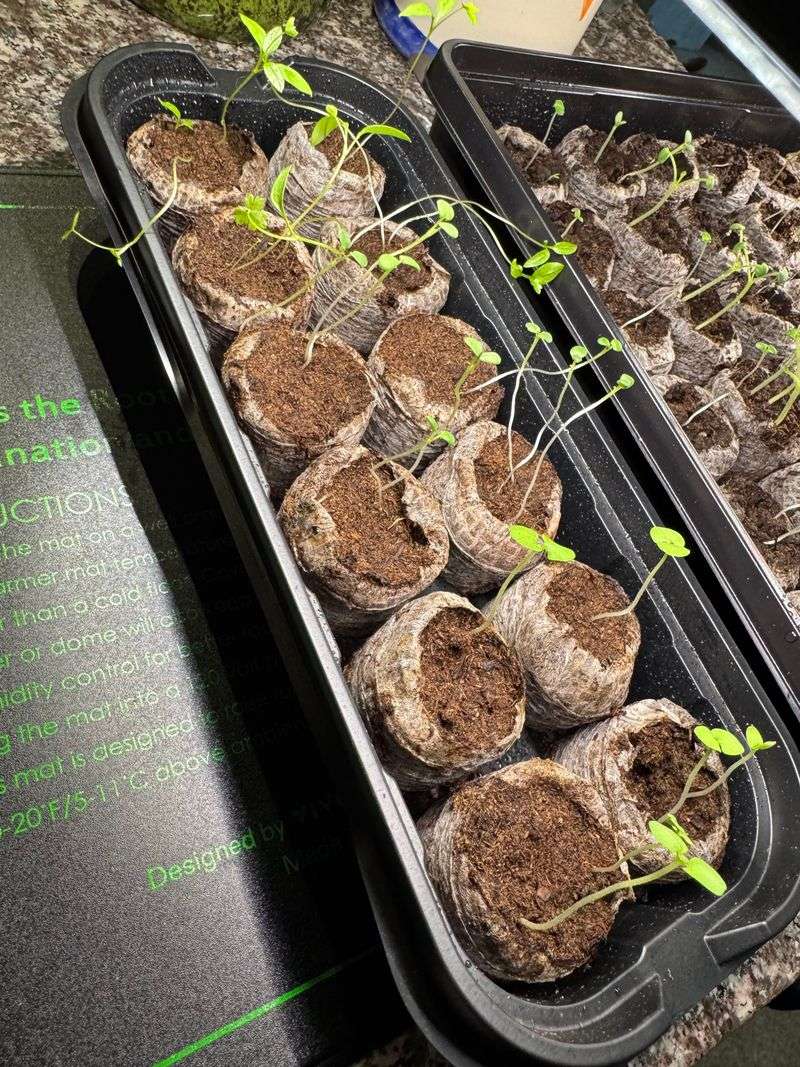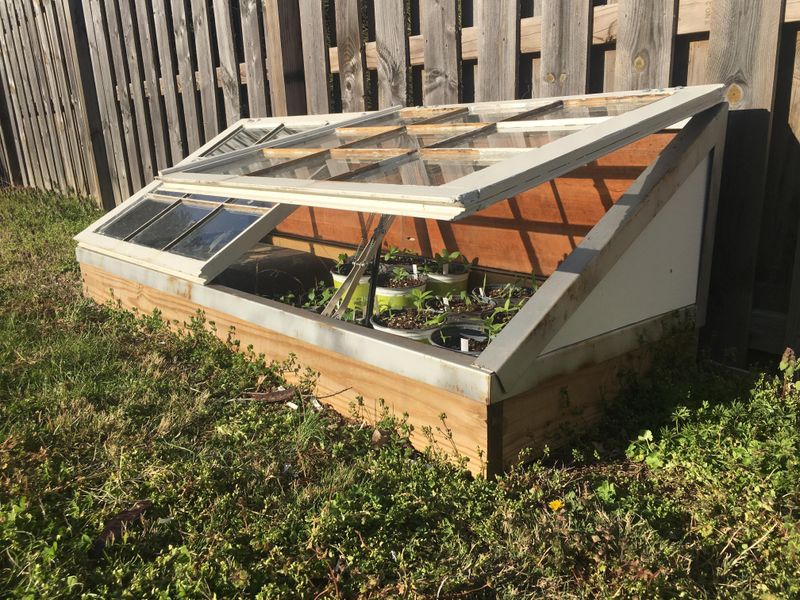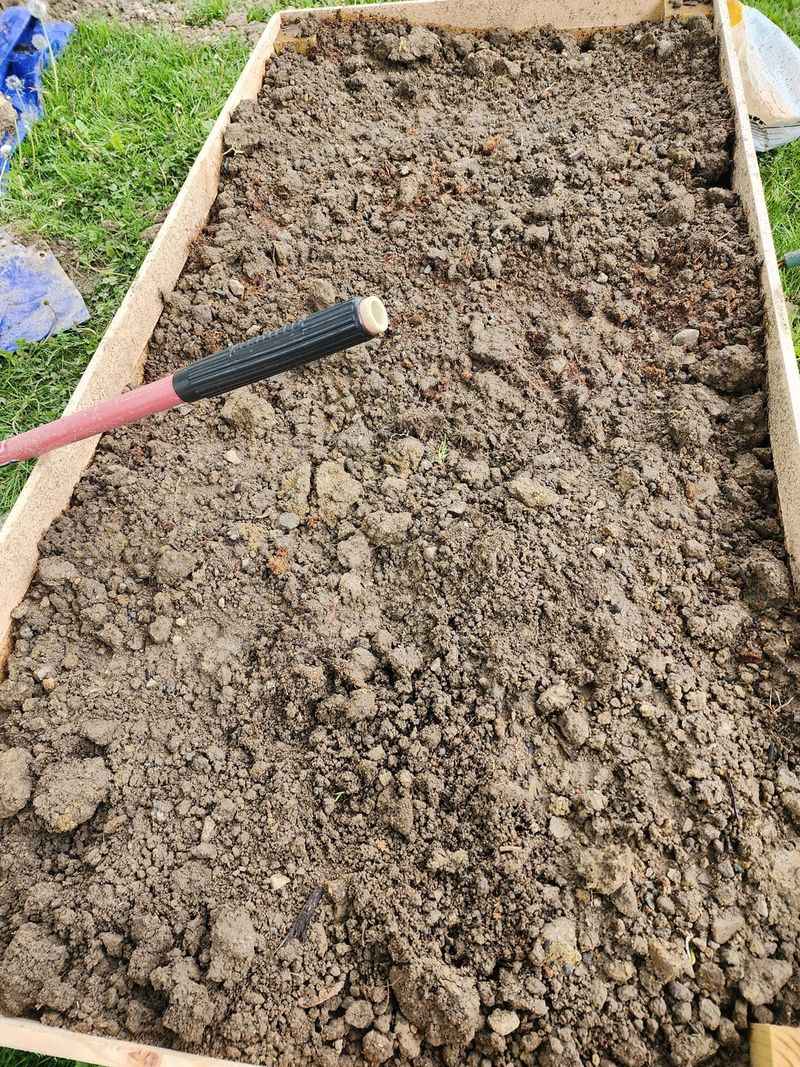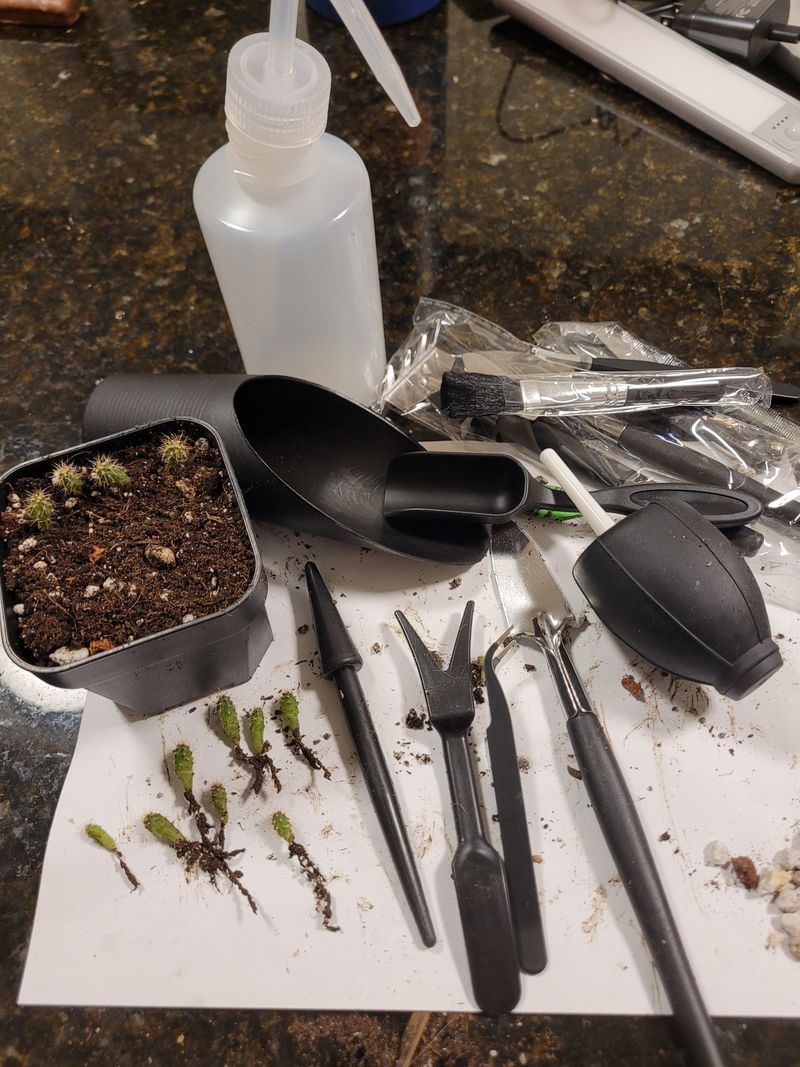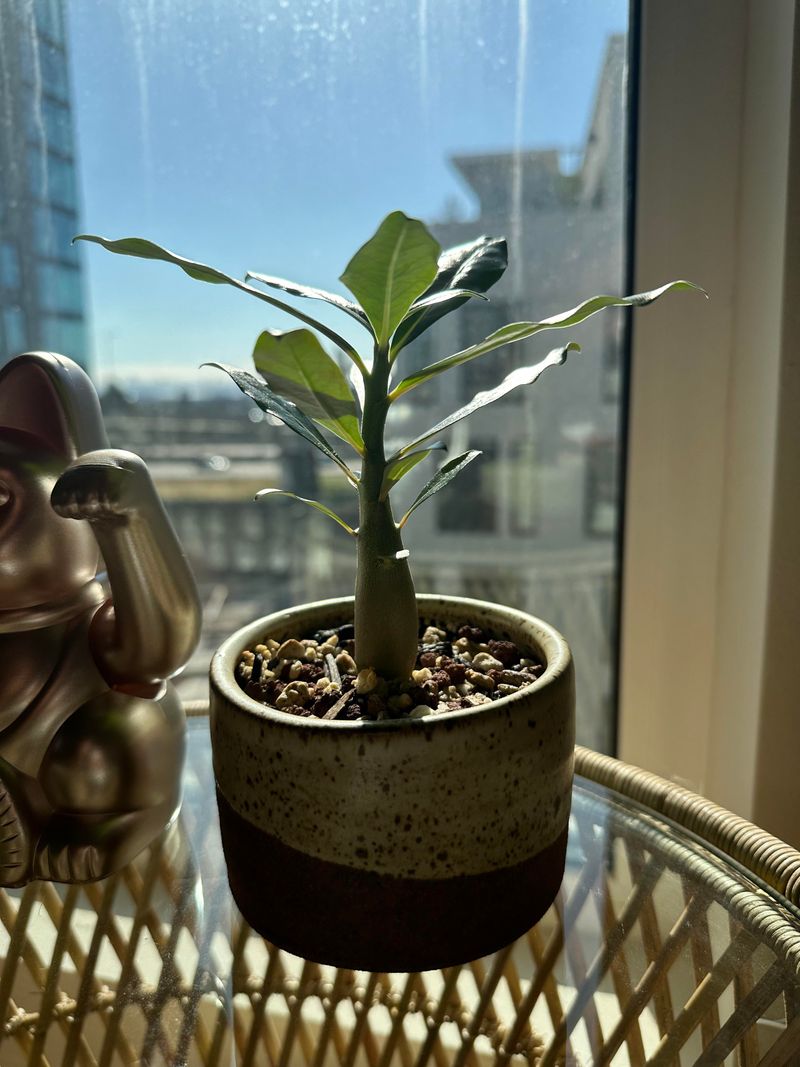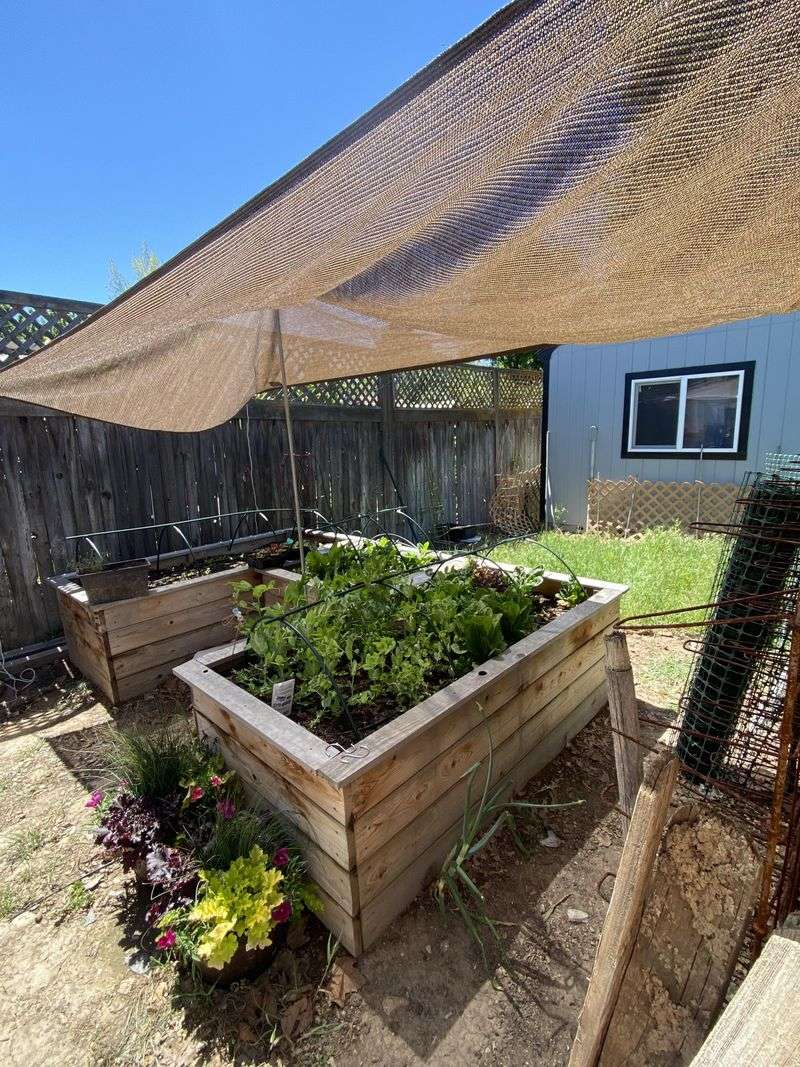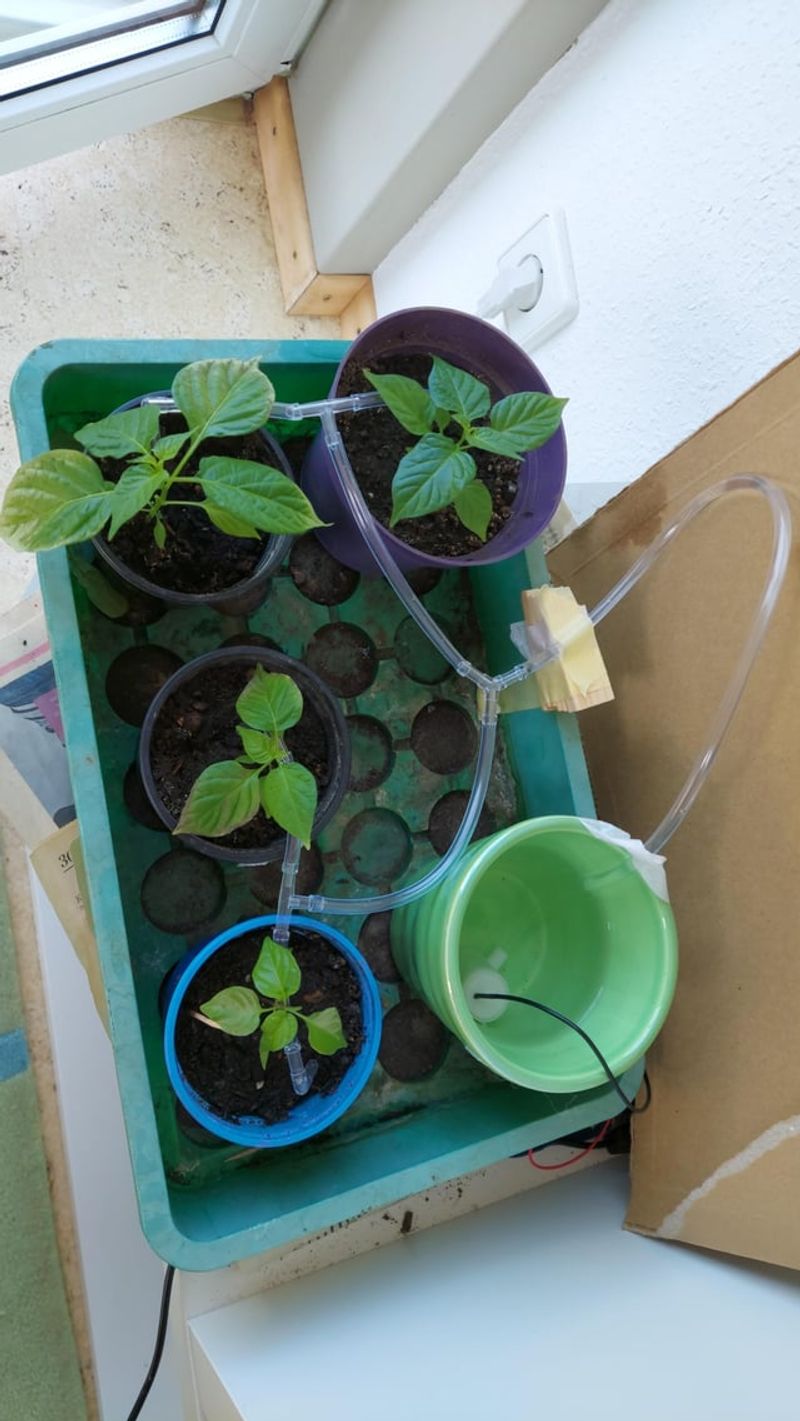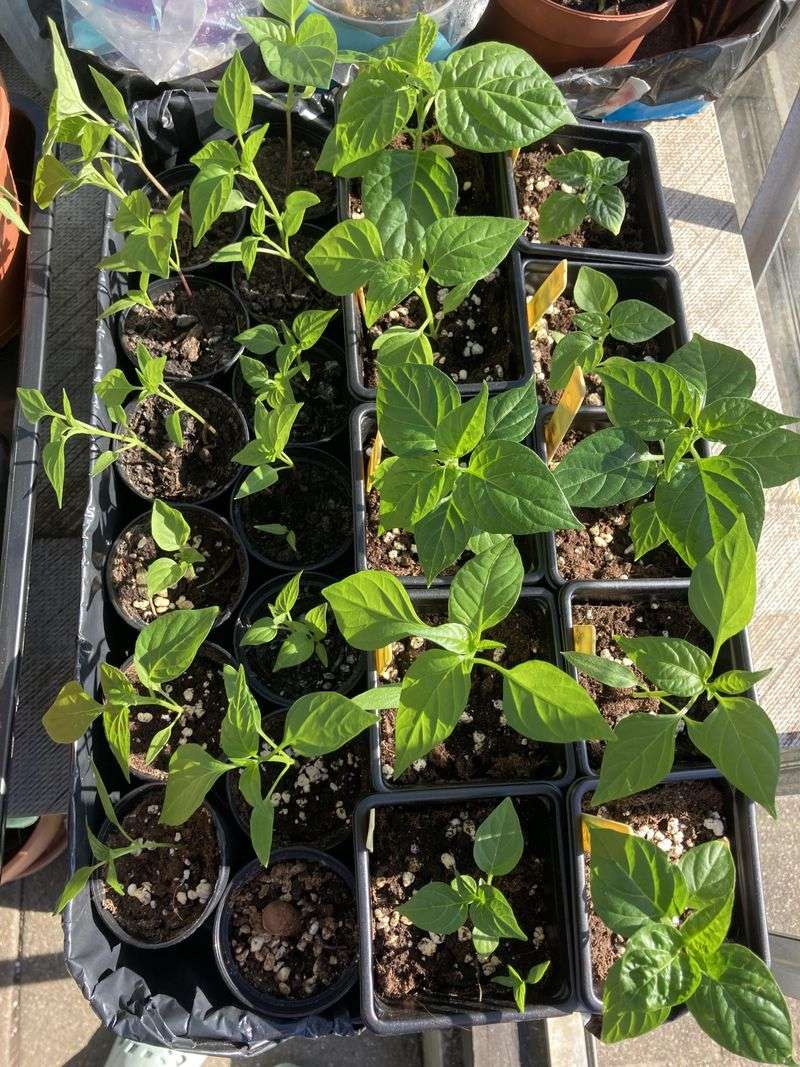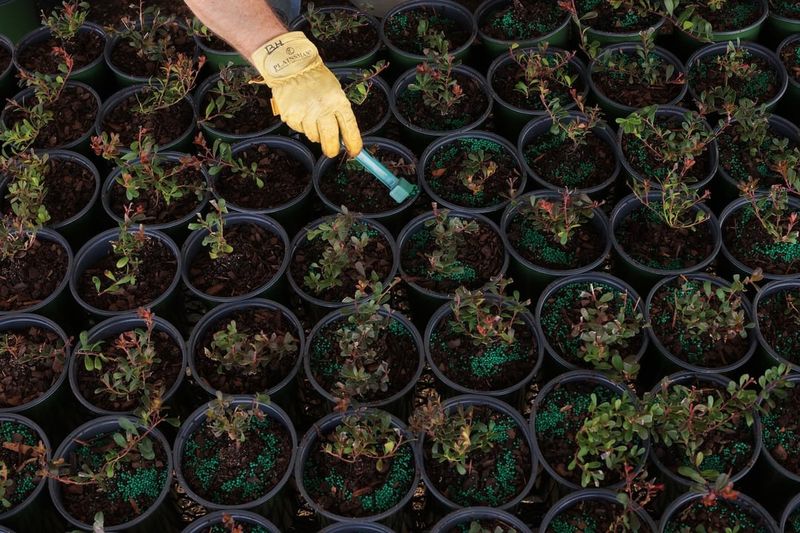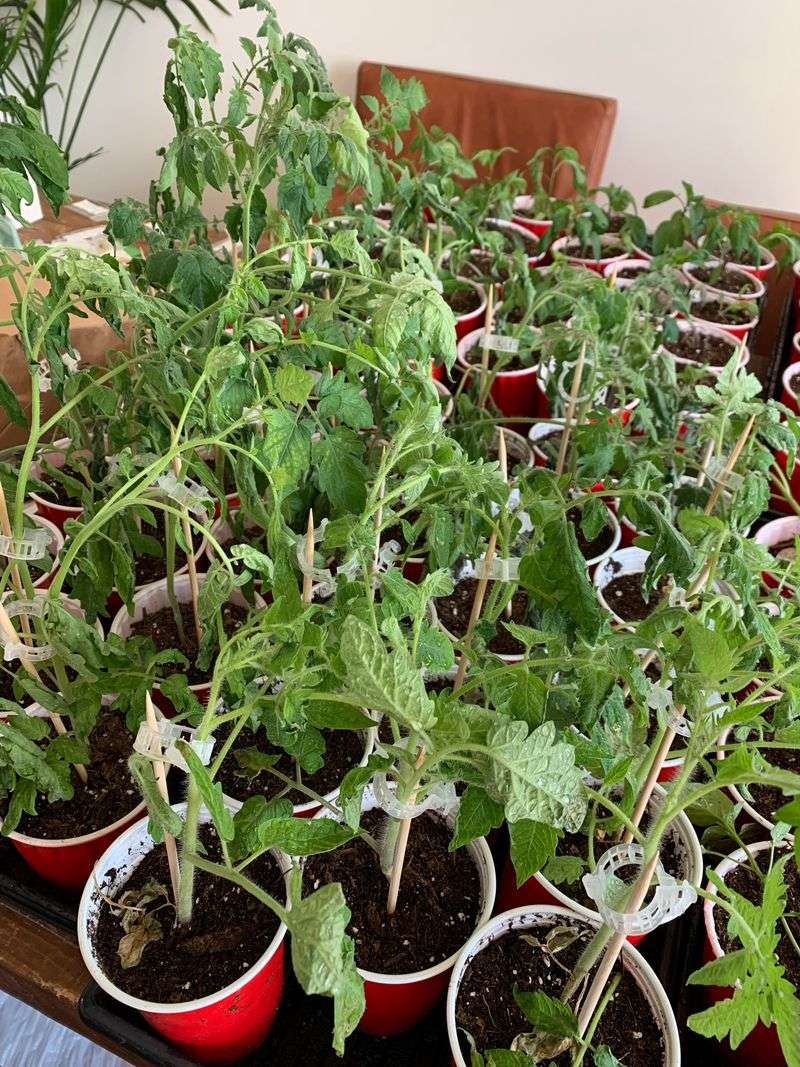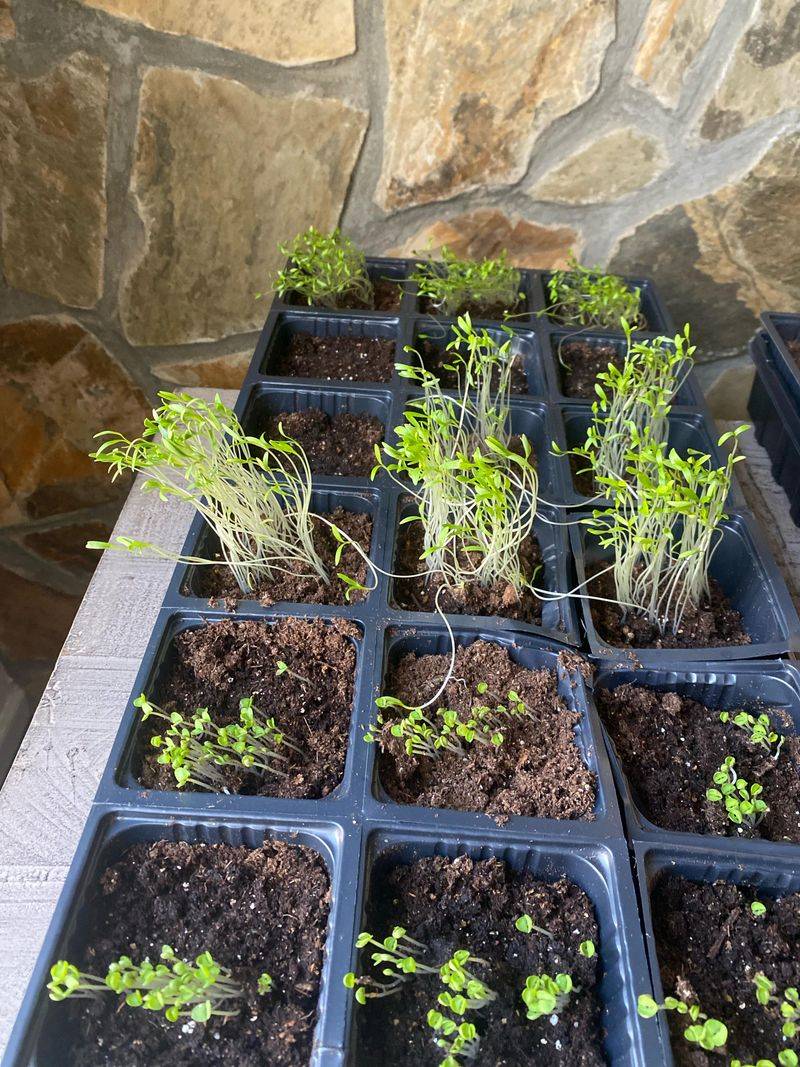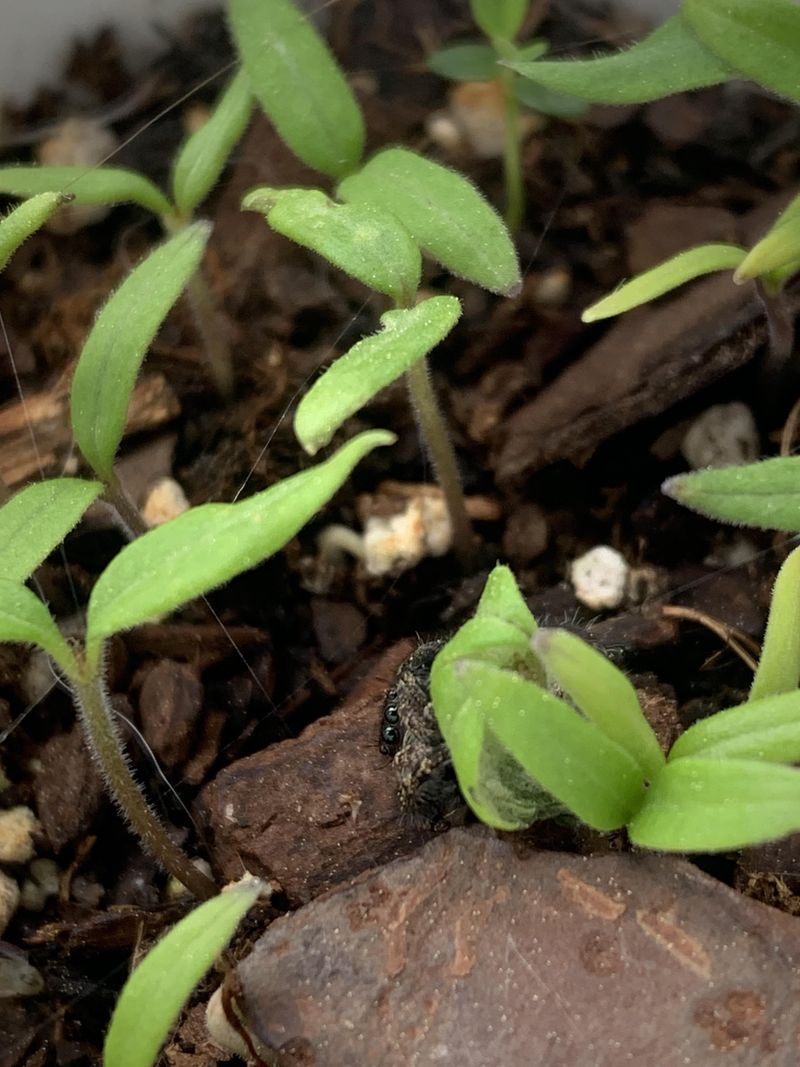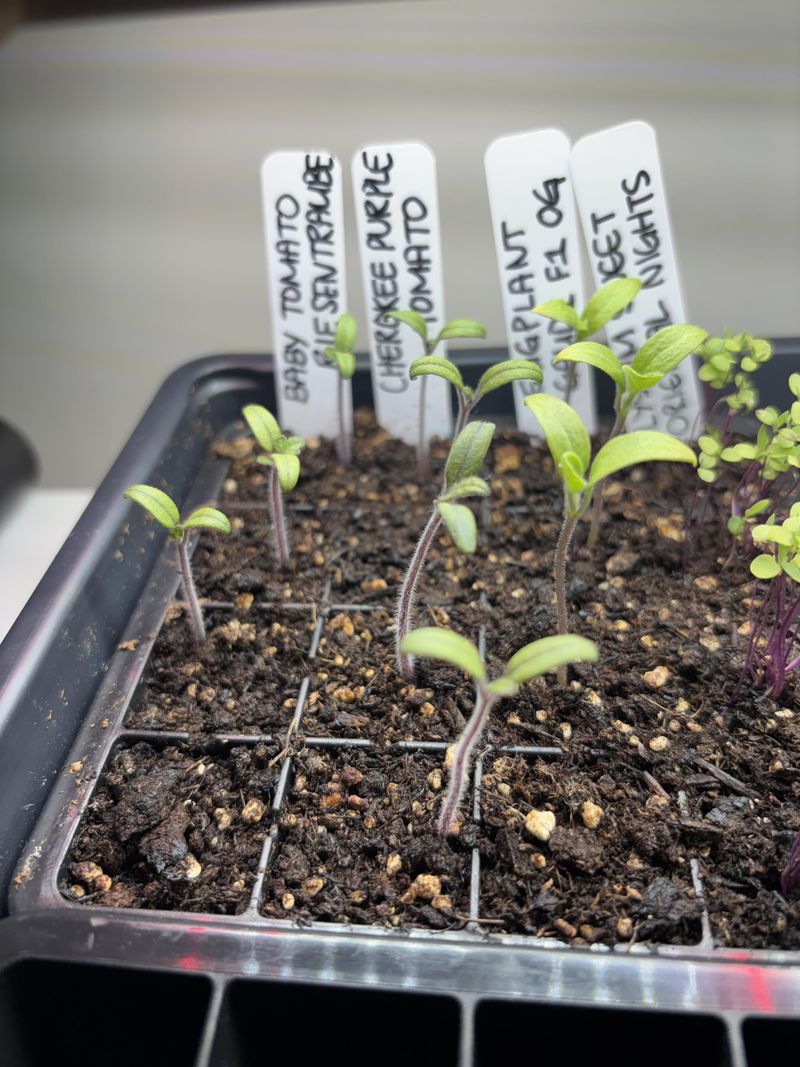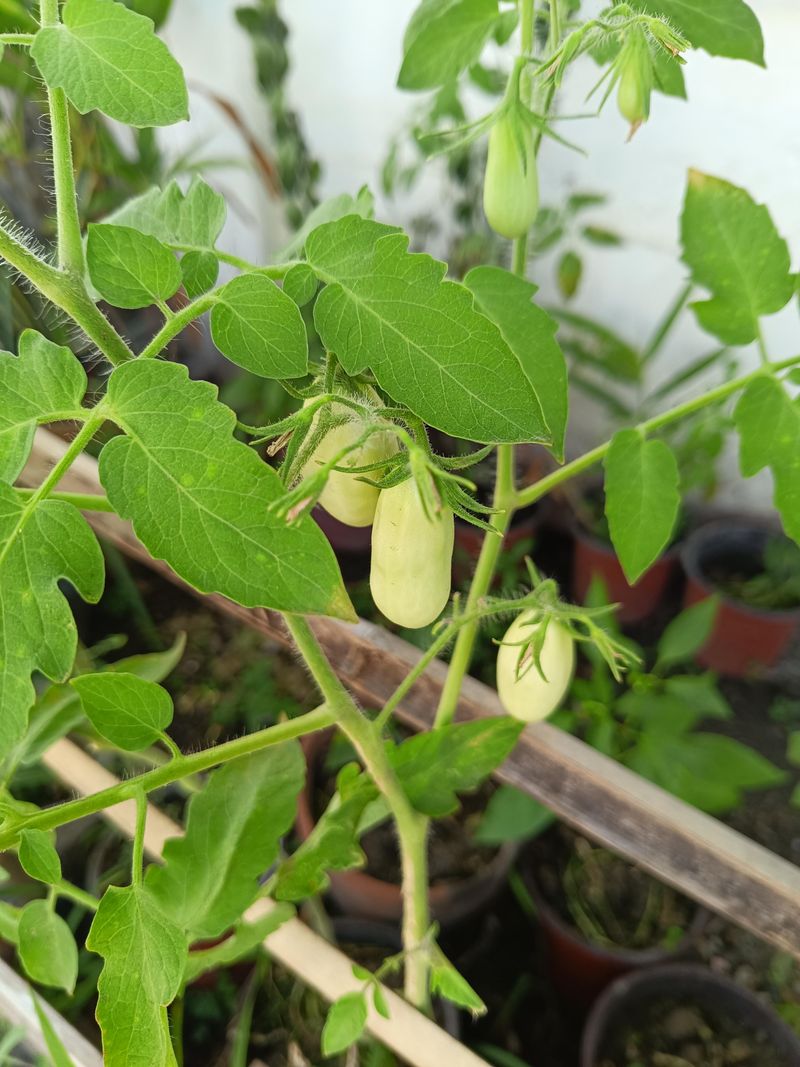Hardening off plants used to stress me out—until I figured out a rhythm that actually worked. It’s not as tricky as it sounds once you get the hang of it, and the payoff is totally worth it.
I’ve picked up a bunch of tips over the seasons that keep my seedlings from flopping the second they hit real sun and wind. A little patience and a few smart moves can make all the difference.
Let’s walk through it together so your plants stay strong from the start.
1. Start Indoors Early
Creating a strong foundation begins long before your plants see the light of day. Starting seeds indoors gives them a head start, allowing them to develop sturdy roots and foliage before facing the elements. Begin this process several weeks before the last frost date.
By nurturing seedlings indoors, you’re providing a controlled environment where they can grow without the threat of harsh weather. This initial care is crucial for developing healthy plants. Consider using grow lights to supplement natural sunlight if needed.
This structured indoor upbringing means your seedlings will have a better chance of thriving when they finally meet the outside world.
2. Gradual Sun Exposure
Like a gradual wake-up call, seedlings need time to adjust to full sunlight. Initially, expose them to indirect sunlight for about an hour each day, gradually increasing this duration. This step is vital in preventing sunburn on tender leaves.
Sunlight is the fuel for photosynthesis, yet too much too soon can damage delicate seedlings. Using shade cloth or starting under a tree can help reduce initial intensity. Over the course of a week, aim to extend their sunbathing sessions.
This slow introduction helps build a robust plant structure, capable of harnessing the sun’s energy without wilting under pressure.
3. Watch the Weather
Spring weather is notoriously capricious, with its unpredictable mix of showers and sunshine. Before moving your seedlings outdoors, always check the forecast to avoid sudden cold snaps or heavy rains that could set back your hardening efforts.
Understanding weather patterns helps you time the transition perfectly. A calm, overcast day is ideal for the first outdoor experience, as it reduces stress. Sudden changes can be detrimental, so having a backup plan, like a protective cover, is wise.
By becoming a weather-savvy gardener, you ensure that your plants have the best possible start in their new environment.
4. Use Protective Coverings
A night under the stars might be romantic for us, but for seedlings, it can be a chilly, risky ordeal. Row covers, garden cloches, or even simple fabric sheets can offer protection against unexpected cold.
These coverings act like a gentle hug, maintaining a consistent temperature and shielding plants from wind and frost. They’re especially useful during sudden temperature drops or stormy weather. It’s like providing a cozy blanket during transitional phases.
By using covers, you create a nurturing environment that helps your seedlings grow strong before they face the full spectrum of outdoor conditions.
5. Start with Short Stints Outside
Imagine stepping into a cold pool—it’s a shock to the system. Similarly, young plants need short, controlled exposure to the outdoors initially. Start with just an hour or two each day, gradually increasing their time outside.
These initial short stints allow seedlings to slowly acclimate to variables like sunlight, wind, and temperature fluctuations. With each outing, they gain resilience, much like an athlete training for endurance.
This methodical approach reduces transplant shock and strengthens seedlings, readying them for their permanent garden spot.
6. Wind Acclimation
A gentle breeze can toughen up your seedlings, much like a light workout strengthens muscles. Wind acclimation helps seedlings develop sturdy stems that can withstand outdoor conditions.
Initially, exposure to a gentle fan indoors can mimic the outdoor breezes, making plants more resilient. Gradually introduce them to natural wind by placing them outside during calm afternoons.
Over time, these breezy encounters enhance your seedlings’ durability, preparing them for the gusty challenges they’ll face in the garden.
7. Monitor Soil Moisture
Just as we crave a balanced diet, seedlings require the right amount of moisture to thrive. It’s crucial to keep their soil consistently damp but not waterlogged. Over- or under-watering can stress young plants.
Check the soil daily by inserting your finger about an inch deep. If it feels dry, it’s time to water. Overwatering, however, can lead to root rot, so ensure pots have adequate drainage.
By maintaining optimal moisture levels, you support robust root development, crucial for successful acclimation to outdoor life.
8. Choose the Right Containers
Selecting the right vessel for your seedlings is akin to choosing the perfect pair of shoes—it can make all the difference. Containers should be sized appropriately, with good drainage to prevent waterlogging.
Biodegradable pots, like peat or coir, offer the added benefit of being plantable directly in the ground, reducing transplant shock. Recycled plastic containers are durable and reusable, making them an eco-friendly choice.
The best containers support root growth and allow for easy transitions when moving seedlings to their outdoor home.
9. Fertilize Lightly
Feeding seedlings is like giving them a nutritional boost, but moderation is key. Too much fertilizer can burn tender roots and cause more harm than good. Begin with a weak solution every couple of weeks.
Organic fertilizers, like fish emulsion or compost tea, offer gentle nourishment, promoting steady, healthy growth. Avoid high-nitrogen fertilizers that can lead to leggy plants.
By striking the right balance, you provide your seedlings with vital nutrients without overwhelming them, setting the stage for a successful transition outdoors.
10. Balance Temperature Fluctuations
Spring can be a season of extreme mood swings, with temperatures swinging from warm to cold. Monitoring these changes is vital for your seedlings’ success. Drastic temperature shifts can stunt growth or cause stress.
Use min/max thermometers to track temperature variations over time. This data helps you decide when to bring seedlings indoors or provide extra protection.
By managing these fluctuations, you create a stable environment that fosters healthy growth and prepares seedlings for the unpredictability of garden life.
11. Use a Cold Frame
Cold frames act as a transitional home, offering seedlings a sheltered space to acclimate slowly. These mini-greenhouses capture solar energy, providing warmth and protection against early spring chills.
By adjusting the lid, you control ventilation and temperature, mimicking outdoor conditions while safeguarding against frost. This gradual exposure builds plant resilience without overwhelming them.
Cold frames are a gardener’s secret weapon, bridging the gap between indoor pampering and the great outdoors.
12. Mind the Nighttime Temperatures
As nighttime falls, temperatures can take a dip, spelling trouble for tender seedlings. Keep a close eye on these nightly lows, as cold spells can be particularly damaging.
During the hardening off period, consider bringing seedlings indoors if temperatures threaten to drop too steeply. Alternatively, use cloches or row covers for added warmth.
By being mindful of nighttime temperatures, you ensure that your plants develop into robust, garden-ready specimens.
13. Soil Preparation
Before welcoming seedlings into their new home, prepare the soil like a hospitable host setting the dining table. Loose, well-draining soil enriched with compost offers the perfect start.
Invest time in removing weeds and debris, creating a fertile environment that encourages roots to spread. Testing pH levels can help you adjust soil conditions for optimal growth.
A well-prepped bed provides the nurturing base your seedlings need to establish themselves and flourish in their new surroundings.
14. Use Transplant-friendly Tools
When it comes to transplanting, having the right tools can make the process smoother and less stressful for both you and your seedlings. A sturdy trowel, dibber, and gloves are essential.
These tools help you handle young plants gently, minimizing root disturbance. A good trowel allows for precise digging, while a dibber makes planting holes easy.
Investing in quality tools ensures that your hardening-off process is efficient and successful, leading to happy, healthy plants.
15. Prune for Strength
Pruning isn’t just for overgrown shrubs; it’s a valuable practice for seedlings too. Trimming excess leaves encourages bushier growth and stronger stems.
By removing weak or crowded leaves, you allow the plant to focus energy on developing a robust structure. This enhances their ability to withstand outdoor challenges.
Regular pruning during the hardening off phase cultivates hardy plants ready to tackle whatever nature throws their way.
16. Gradual Temperature Change
Imagine jumping from a cool room into a warm pool; the shock can be intense. Similarly, seedlings require a gradual introduction to temperature changes.
Start by placing them outside during the warmest part of the day, then slowly extend their exposure to cooler temperatures. Over time, they’ll become accustomed to the daily variations.
This gradual acclimation builds resilience, preparing your plants for the diverse conditions they’ll face in your garden.
17. Reduce Watering Gradually
As the hardening off process unfolds, begin to reduce watering slightly to encourage deeper root growth. This technique mimics natural conditions and helps seedlings adapt to less frequent waterings.
By allowing the soil to dry out a bit between waterings, you promote a stronger root system. This resilience is essential for survival in outdoor conditions where moisture may not always be constant.
Gradual reduction in watering sets the stage for robust plants that can thrive with minimal intervention once transplanted.
18. Space Them Out
Just like personal space is important for us, seedlings need room to breathe and grow. Proper spacing prevents competition for sunlight and nutrients, fostering healthier development.
Crowding can lead to weak, lanky plants susceptible to disease and pests. By allowing adequate space, you ensure each seedling has enough resources to thrive.
Thoughtful spacing is key to a flourishing garden, where each plant can reach its full potential.
19. Introduce Companion Plants
Certain plants thrive when they have the right company, much like people. Companion planting can boost growth and deter pests naturally.
Marigolds, for example, can ward off nematodes, while basil enhances the flavor of neighboring tomatoes. These beneficial relationships create a harmonious garden ecosystem.
By introducing companion plants during hardening off, you set the stage for a productive and thriving garden.
20. Stay Consistent
Consistency is often the unsung hero of successful gardening. Regularity in care routines ensures that seedlings develop strong and healthy, ready to face the outdoors.
Create a schedule for watering, temperature checks, and sun exposure. This consistent approach builds resilience and helps you catch any issues early.
By sticking to a routine, your seedlings gain the stability they need to transition smoothly to their new garden home.
21. Trust Your Instincts
Gardening is as much an art as it is a science, and sometimes, intuition guides us best. Pay attention to how your seedlings respond to environmental changes.
Trusting your instincts allows you to make adjustments as needed, tailoring the hardening off process to your specific conditions. Observation is key to understanding what works best.
Your experience and intuition will foster a successful transition from indoor seedlings to thriving garden plants.
22. Consider Local Climate
No two climates are exactly alike, and understanding your local weather patterns plays a critical role in seedling success. Tailor your hardening off process to the specific challenges of your area.
Research the expected last frost dates and average temperatures to time your outdoor transition perfectly. Adjust watering and sun exposure based on local conditions.
By aligning your methods with the local climate, you ensure your seedlings are well-prepared for their new environment.
23. Observe and Adapt
The garden is an ever-changing canvas, and flexibility is your ally. Regular observation lets you pinpoint what your seedlings need to thrive.
Notice any signs of stress or growth, and be prepared to tweak your approach. Whether adjusting sunlight, watering, or protection, adaptability ensures healthier plants.
An observant gardener nurtures a resilient garden, where each plant receives the attention it needs to flourish.
24. Incorporate Mulch
Mulch acts as the unsung hero of the garden, providing insulation and moisture retention for young plants. Spread a layer around seedlings to protect them during the transition.
This barrier reduces weeds and stabilizes soil temperature, creating an ideal environment for roots to expand. Organic mulches also enrich the soil as they decompose.
Incorporating mulch is a strategic move that supports robust growth and simplifies maintenance in the long run.
25. Rotate Outdoor Spots
Much like rotating crops, moving seedlings to different garden spots exposes them to varied conditions. This practice builds resilience and prepares them for diverse environments.
Rotating spots allows seedlings to experience different light levels, wind exposure, and temperature changes. This dynamic acclimatization strengthens their adaptability.
By varying their outdoor experience, you cultivate robust plants ready to thrive in any garden plot.
26. Maintain Pest Vigilance
Young seedlings are especially vulnerable to pests eager for a tasty snack. Regular checks are essential to catch issues early and protect your plants.
Using natural deterrents like neem oil or introducing beneficial insects can keep pests at bay. Early intervention prevents significant damage and ensures healthy growth.
By maintaining vigilance, you safeguard your seedlings from threats, allowing them to mature into resilient garden plants.
27. Provide Nutrient Boosts
Young plants sometimes need an extra push to reach their full potential. Applying nutrient boosts during the hardening off phase can enhance growth.
Liquid fertilizers provide quick nourishment, supporting robust root and leaf development. Be mindful of using balanced formulas to avoid over-fertilization.
A well-timed nutrient boost sets your seedlings up for success, ensuring they thrive in their permanent outdoor home.
28. Celebrate Progress
Gardening is a journey filled with both challenges and triumphs. Take time to celebrate each milestone as your seedlings grow stronger.
Reflecting on your progress helps you appreciate the art of gardening and the dedication involved. It also provides motivation for future endeavors.
By acknowledging your hard work and the success of your seedlings, you cultivate a deeper connection with your garden.

